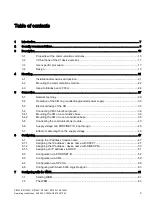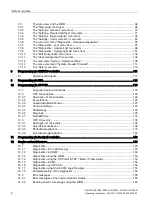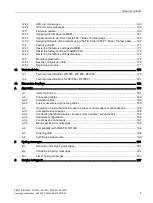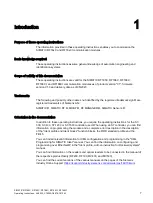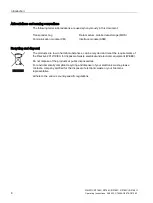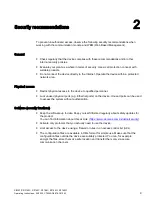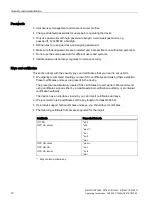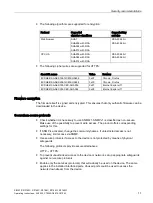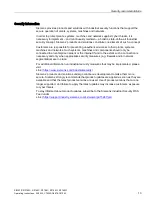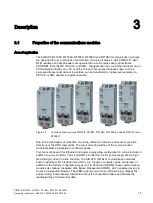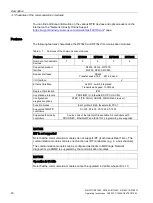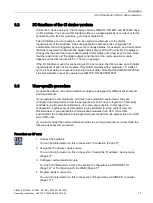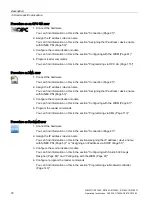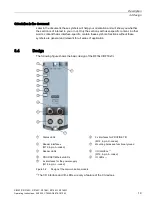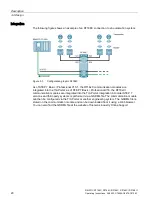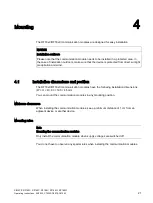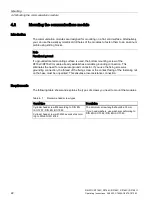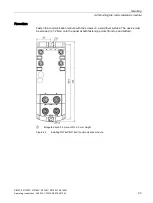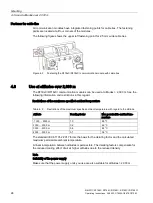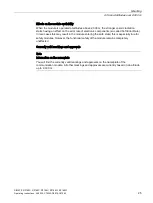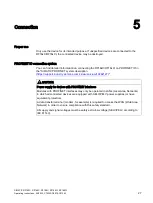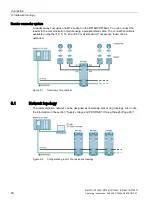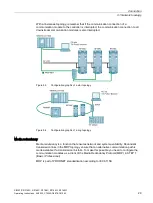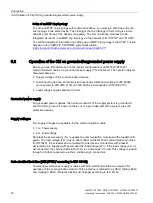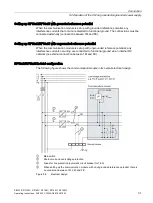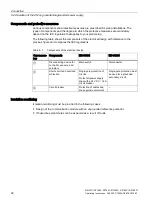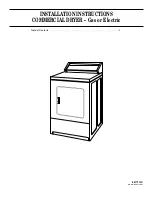
Description
3.2 I/O functions of the CI device versions
SIMATIC RF185C, RF186C, RF188C, RF186CI, RF188CI
Operating Instructions, 04/2020, C79000-G8976-C512-03
17
3.2
I/O functions of the CI device versions
Unlike the C device versions, the CI device versions SIMATIC RF186CI and RF188CI have
an I/O interface. You can use this interface either as a single digital input or output or for the
connection of an IO-Link module (e.g. IO-Link module K20).
The I/O interface can, for example, also be used as an alternative to the digital
inputs/outputs of the controller. One such application example is the configuration of
automatisms that are triggered by an event or changed status, for example, by a transponder
that was recognized. Unlike with the digital inputs/outputs of the S7 controller, the status is
changed by the event that occurs and remains in this status until a new event occurs. Note
that the reaction time of the digital outputs (and inputs) of the communication module
depends on the CM load and is 50 - 100 ms on average.
If the I/O interface is used for connecting an IO-Link module, the CM can use up to 8 digital
inputs/outputs of each of the modules. Only DI/DO modules with a maximum of 16 bits of
cyclic process data are supported (input and output data). Note that the SIMATIC RF200 IO-
Link Ident readers cannot be operated via SIMATIC RF186CI/RF188CI.
3.3
User-specific procedure
As described above, the communication modules are designed for different environments
and requirements.
If you operate the communication modules in an automation environment, they are
configured and programmed from the perspective of an S7 user. Integration in third-party
controllers (e.g. Rockwell controllers) is, of course, also possible. In this case, the
configuration, engineering, and programming is performed from the point of view of a
Rockwell user. If you operate the communication modules in an OPC UA or XML
environment, the configuration and programming are made from the perspective of an OPC
UA or XML user.
If you want to adapt the communication modules to your requirements, we recommend the
following user-specific procedure:
Procedure as S7 user
1.
Connect the hardware
You can find information on this in the section "Connection (Page 27)".
2.
Assign the IP address / device name
You can find information on this in the section "Assign the IP address / device name
(Page 47)".
3.
Configure communication module
You will find information on this in the section "Configuration via PROFINET IO
(Page 52)" or "Configuring with the WBM (Page 61)".
4.
Program reader commands
You can find information on this in the section "Programming via SIMATIC controller
(Page 111)".

